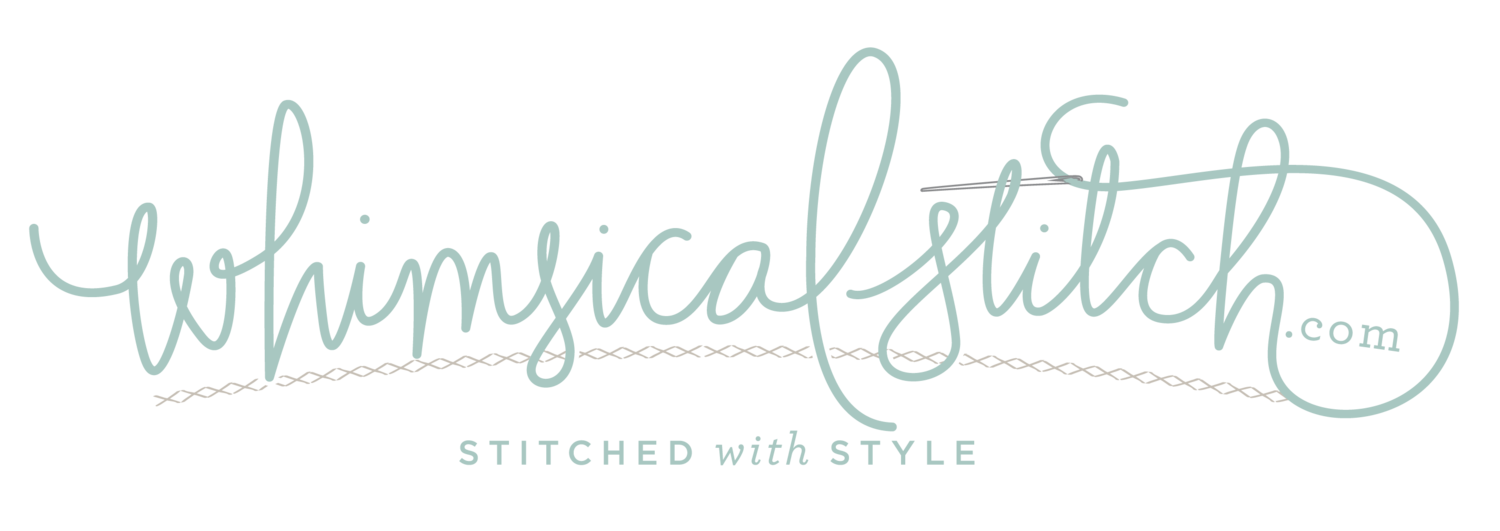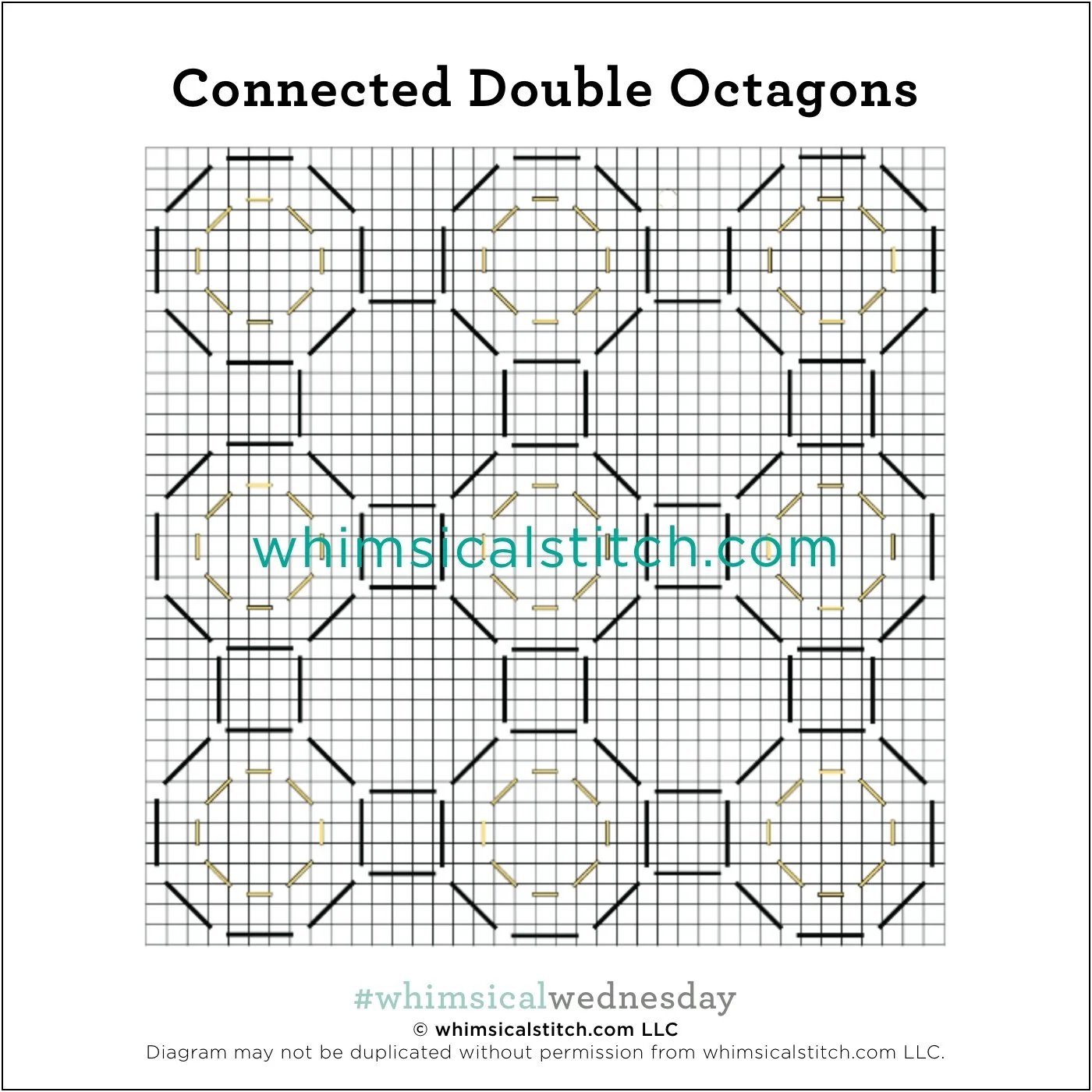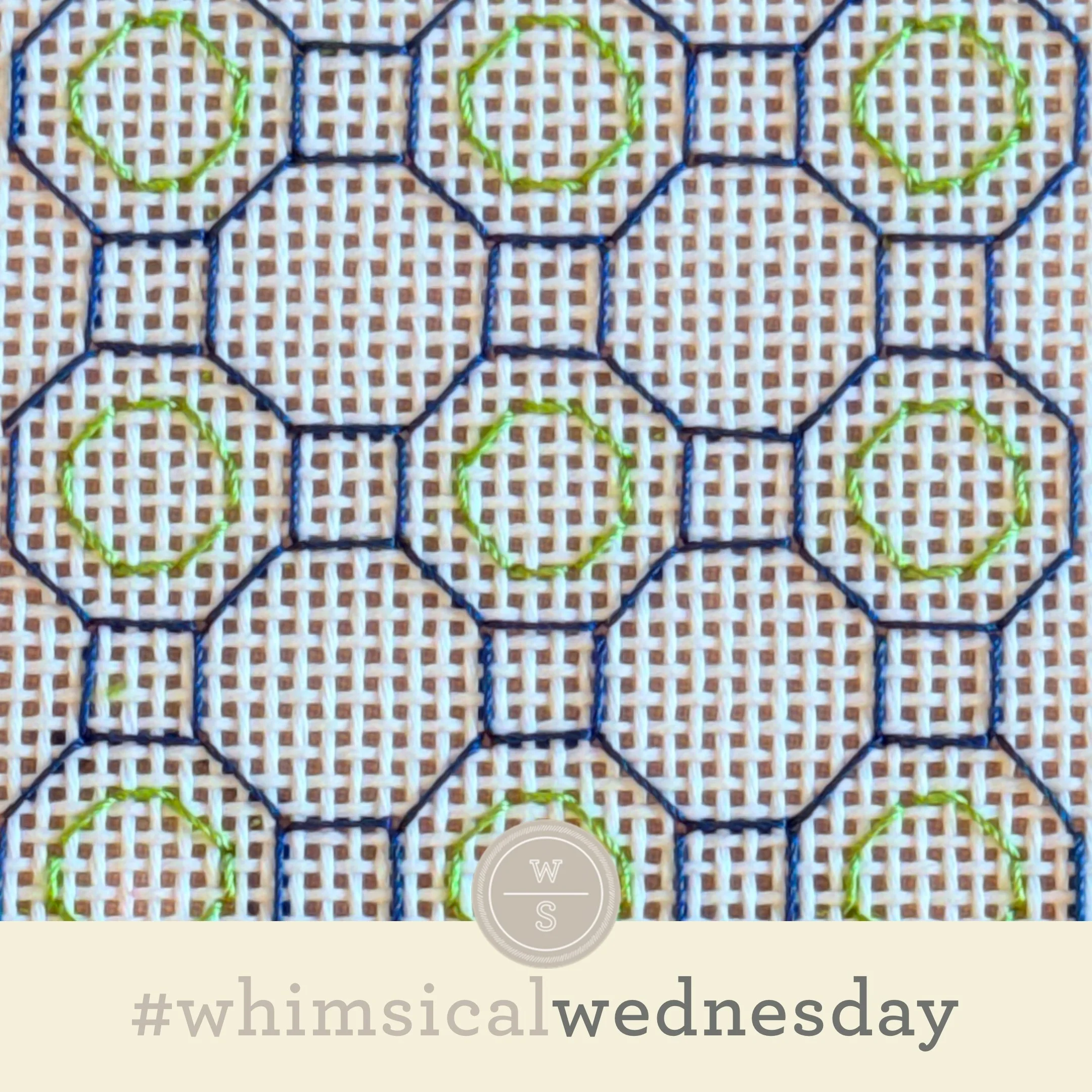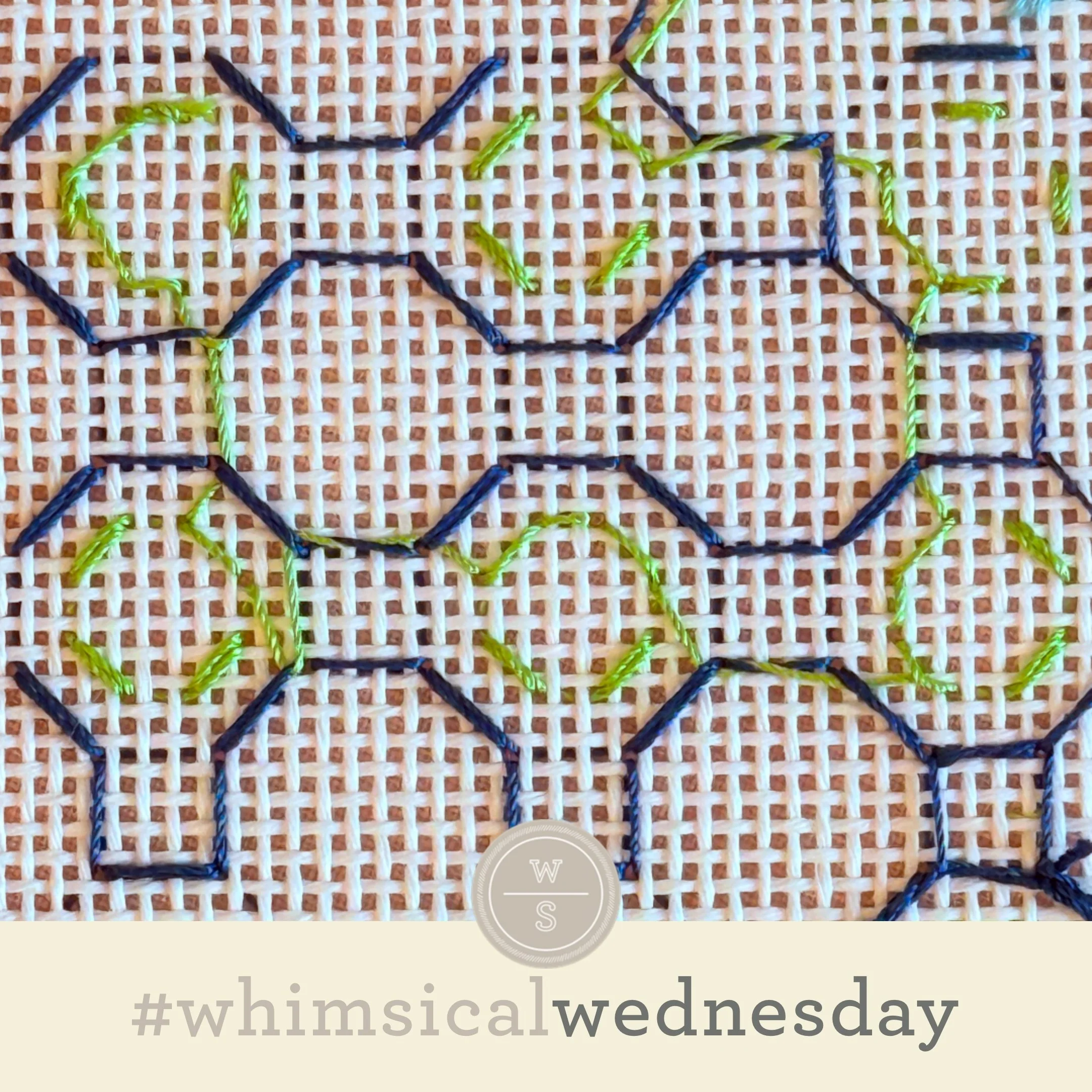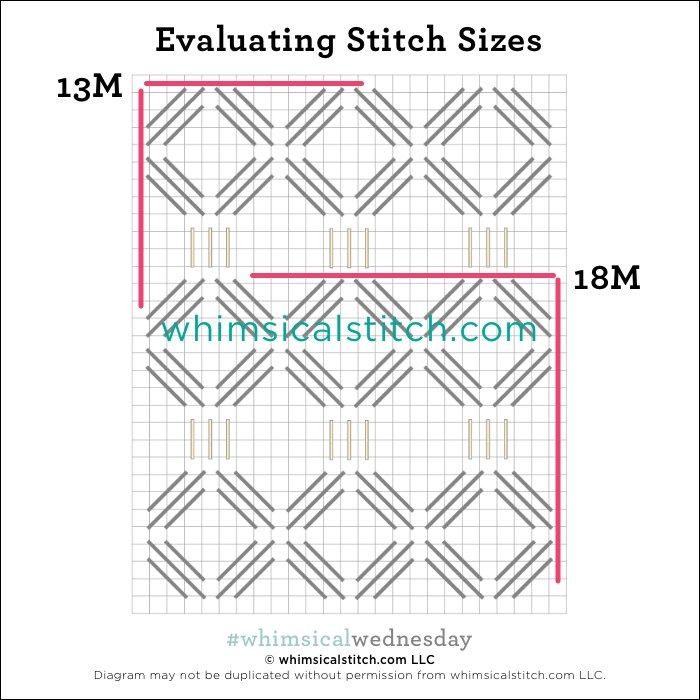Today’s stitch is a structured stitch that typically spawns variations. But in a case of opposite day, it was the random version that prompted today’s structured version. The plan was to connect all of the double octagons and call it a day. But, once again, I changed my mind.
The stitched sample is blue and green Soie Perlee on 13M. Again, the plan was to fill all of the larger octagons (black lines) with the smaller octagons (yellow lines). But, as I added the small octagons, I loved the rows that emerged by leaving every other column blank. Voila!
Using two colors also allowed me to show you how I move the threads on the back to avoid the open spaces. As I’ve mentioned before, I pivot between shared holes to create the initial pattern. For example, I started with the larger octagons (blue threads). I added a horizontal stitch on the left and ended it on the right. With the needle still behind the canvas, I moved the needle and came up in the hole at what would be the bottom of the diagonal stitch and returned it to the hole on the right-hand side of the original horizontal stitch. I returned to the bottom of the diagonal stitch and added the next vertical stitch. The photo on the right illustrates how the back mimics part of the pattern on the front.
When adding the smaller octagons, use the blue threads as a bridge to move the green thread to where it needs to be. If you look in the upper right-hand corner, you can see how I literally wrapped the green thread around the blue thread twice to get the thread inside the next octagon. This kept both threads straight. But, in my experience, give yourself grace and do not obsess over the one hole that the green thread may slightly touch from behind the canvas. Place the stitching at a slight distance and ask yourself if you really see it.
Needless to say, this is my new favorite background. (And I really loved last week’s background.)
Have fun with it!
As you are auditioning stitches (from any stitch source), count the number of canvas threads on the diagram that match your mesh size. And there you have what an inch of the stitch will look like. Evaluate that against the area where you plan to use the stitch and make your final decision. If you start integrating this step into your stitch selection process, you may be surprised at how many stitches you think are large are much smaller than you realize.
By (sometimes) including this step in my own process, I find I am now integrating much longer stitches than I ever thought I would. I used to think a stitch six rows long was super big. I have very much changed my tune, which has helped me expand my creativity, especially for large-space stitches.
Today’s stitch diagram, along with all other #whimsicalwednesday and #smallspacesunday stitch diagrams, can also be found on a Pinterest board here. Be sure to follow whimsicalstitch.com on Facebook, Pinterest, Instagram, and Twitter.
If you like what you see on this blog, there's more. Mary’s Whimsical Stitches is a series of four books offering contemporary how-to collections of more than 200 stitches (in each volume) for all stitchers, regardless of skill level. All books include updated and sequenced diagrams from this blog, plus a collection of all-new stitches from private lessons and other class projects. Visit here to find a needlepoint retailer that carries my books.
New to needlepoint or looking for a refresher? Please download a handy how-to guide covering basic needlepoint stitches and stitch compensation techniques along with new top-line information on needlepoint materials and tools, how to handle threads, and other helpful needlepoint resources.
whimsicalstitch.com also sells Stitch Guides and Stitch Concepts for Melissa Shirley Designs, Zecca Designs, Sandra Gilmore, Purple Palm, Maggie, and Penny MacLeod, and many more. Click here to see the newest guides and click here to see the entire collection.
I hope you have the perfect spot for this stitch! Please enjoy! Have a wonderful #whimsicalwednesday!
A Note about Diagrams
I use color in diagrams to make them as clear as possible. The primary function of different colored lines is to illustrate a stitch sequence. For example, the layering of colors demonstrates you add them in that order. They can also provide ideas on integrating additional threads (one line for each color). Or, you can use the same thread for all color lines. That's where I encourage you to use your imagination for the space you are stitching!
